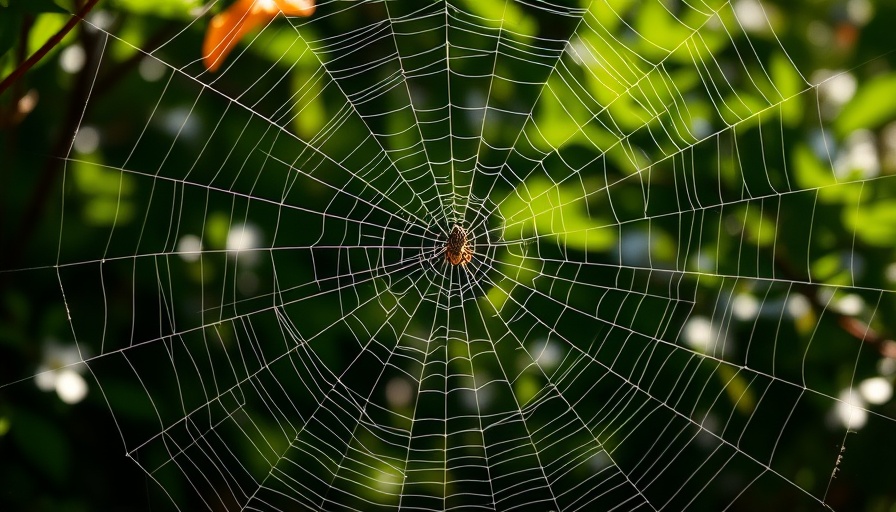
Understanding the Role of Spider Webs in Home Environments
For many homeowners, a sudden encounter with an unexpected spider web can trigger panic. However, recognizing the types of spider webs in and around our homes can make a significant difference. This understanding can not only offer peace of mind but also help us appreciate these eight-legged architects as they play a crucial role in pest control within our living spaces.
The Common Types of Spider Webs
While examining spider webs might not guarantee precise identification of their creators, specific characteristics can help you categorize them into distinct types. Below, we explore some common web types found throughout Pearl City and the broader United States.
1. Orb Webs: Nature’s Engineering Marvels
The classic orb webs, with their iconic wheel-like structure, immediately evoke thoughts of spider craftsmanship. These webs, typically found outdoors near light sources or on windows, are primarily created by orb-weaver spiders, known for their harmless nature. These spiders construct new webs each night, perfecting them into intricate traps designed to catch flying insects. Orb webs exemplify spider ingenuity, with their radial patterns and sticky spirals designed to ensnare multiple insects in a single day's work.
2. Cobwebs or Tangle Webs: A Common Household Fixture
Cobwebs are the most recognizable and ubiquitous forms of spider webs in homes. Often seen clinging to corners, these webs are three-dimensional and lack a distinct pattern, making them seem chaotic. Despite their haphazard appearance, cobwebs efficiently catch crawling pests. Most spiders that weave these types of webs belong to the family Theridiidae, which includes the infamous black widow. However, rest assured, most cobweb species are non-aggressive and prefer hiding instead of confrontation. For those wishing to prevent new cobwebs, a gentle technique involving capturing and relocating the spider can keep your spaces cleaner.
3. Funnel Webs: A Hidden Retreat
Funnel webs present a unique structure that combines a sheet with a retreat area where the spider resides. Often located low to the ground, these webs serve as traps for insects that fall in, while providing a safe haven for the spider. Funnel weavers, particularly the house spider, quickly dart out to ensnare unsuspecting prey. Their design allows for quick strikes, leveraging their speed and agility to secure meals.
Historical Context and Cultural Significance
Spiders and their webs hold a longstanding place in both folklore and practical culture surrounding pest management. From Halloween decor to classic children's stories like "Charlotte's Web," these arachnids embody dual symbolism of fear and utility. In many cultures, spiders are celebrated as symbols of creativity and patience, attributes which are easily observed in their web-crafting abilities.
Future Predictions: How Climate Change Affects Spider Populations
Looking ahead, the impact of climate change on spider behavior and ecosystem roles is becoming a significant conversation. As habitats shift due to warming climates, the species distribution may change, bringing new spider types to residential areas. Homeowners in Pearl City might need to prepare for the arrival of non-native species, potentially altering the dynamics of local pest management.
Practical Insights: How to Coexist with Spiders
Rather than fearing these insect predators, consider adopting a strategy of coexistence. Keeping your home tidy and reducing clutter can minimize spider habitats indoors. Using outdoor lighting strategically can help reduce insects, ultimately lessening spider attraction. If you find a spider in your home, take the time to identify its web type — understanding whether it poses any threat can help you decide the appropriate action.
Conclusion: Embrace the Nature of Your Home
In embracing the presence of spiders, we not only gain allies in pest control but also enhance our understanding of local biodiversity. Rather than viewing spiders as mere creepy intruders, consider them miniature roamed architects of your home’s ecosystem. They remind us of the boundary between our created spaces and the wild's intricate web of life.
By recognizing and respecting spiders and their webs, you can transform anxiety over these creatures into appreciation for their ecological contributions. For those looking for hands-on ways to manage spider populations responsibly, understanding their behavior and types of webs is a powerful tool. If you’re eager to learn more about pest control and home improvement solutions in Pearl City, consider reaching out to local professionals who can offer tailored advice!
 Add Row
Add Row  Add
Add 




Write A Comment